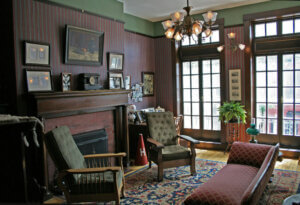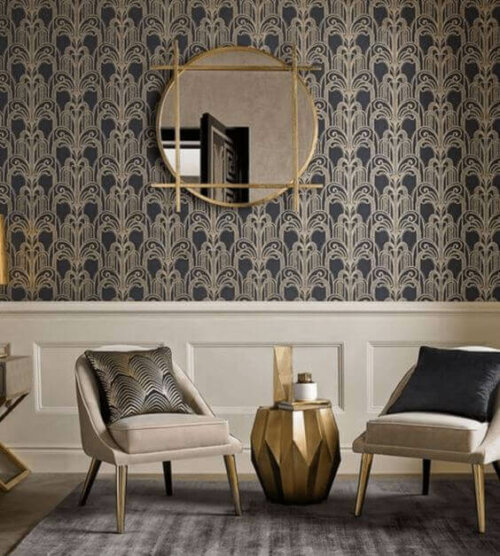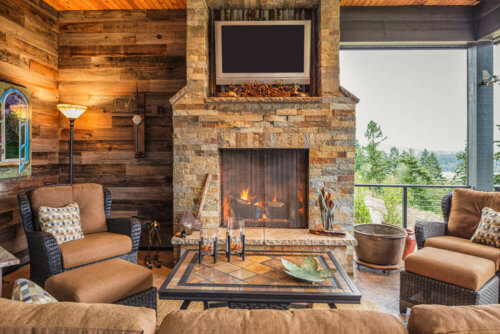Typical 19th-Century Furniture - a Historical Vision

You can apply a classic look in home decoration through 19th-century furniture. A historical vision can be significant, depending on the design and format of each element.
In any case, we’re taking a look at furniture from the past that was very prosperous in the world of interior design. You can use resources, depending on their appearance, to recreate an environment that takes you back in time.
Today, trends tend to be directed towards a more modern and contemporary look. However, you shouldn’t forget that there are some aesthetics from the past that can still work today.
Culture, houses, and typical 19th-century furniture

In this century, the wealthiest classes were those that could furnish their homes with the most expensive resources. The designs were usually made by artists and specialists who generally followed the Art Nouveau style.
Of course, the bourgeois society that lived in palaces, villas, and single-family homes had great taste for decoration. These people believed that rooms should show the personality and character of the family.
This style can be an example of a perspective of the time. This doesn’t mean that you should transform your entire house. In reality, the purpose is not to make it an idealized setting, but to have a source of inspiration and to use furniture that offers a vintage touch.
Interior design gained a lot of popularity in the 19th century.
Typical 19th-century furniture applicable in the living room

Each piece of furniture should be unique, eloquent, and expressive so that it works with the composition of the space and is framed in the context of a modern classic style. Let’s look at four representative pieces of furniture from this era:
- It’s quite common to find a round table and chairs for tea. Normally, it was trendy to have a curved backrest and handles to create dynamism. Also, they have original upholstery to give the room a touch of color.
- Sofas were not very common, and padded armchairs in striking tones took center stage. There are individual chairs or ones that are also for 2 to 3 people. They are comfortable, although you probably don’t want to spend a long time in them.
- Shelves and tables are usually similar to other furniture. To reflect this style they should be made of wood or wrought iron with modernist style designs.
- The fireplace is another decor piece. It can be ornate and carved with geometric, figurative, or vegetal designs in stone, plaster, or wood. It can have a main role that makes it a feature of the room.
For the bedroom

The bed, being the center of the bedroom, is made up of a series of features from this style that make it very attractive. For example, the headboard can have a variety of different designs, such as curves with concave and convex sides, symbols, and be of colors such as white, blue, and deep red.
You may also find a support at the foot that can match the headboard and follows the same aesthetic lines. However, what will make the bed stand out most is the canopy, which you can use to create the typical Victorian style.
At the same time, you can add other elements, such as a bedside table, a large carpet, and, if possible, a wooden floor. This makes the room complete and creates a contemporary classic style.
Other interesting resources
The correct finish is in the details. As a result, it’s important to complete the space with interesting elements. An example is a minibar, such as a trolley with original gold or silver details.
Of course, the chest of drawers is another piece of furniture that, without a doubt, portrays a certain character and is suitable to display accessories that add to the overall look.
You can apply a classic look in home decoration through 19th-century furniture. A historical vision can be significant, depending on the design and format of each element.
In any case, we’re taking a look at furniture from the past that was very prosperous in the world of interior design. You can use resources, depending on their appearance, to recreate an environment that takes you back in time.
Today, trends tend to be directed towards a more modern and contemporary look. However, you shouldn’t forget that there are some aesthetics from the past that can still work today.
Culture, houses, and typical 19th-century furniture

In this century, the wealthiest classes were those that could furnish their homes with the most expensive resources. The designs were usually made by artists and specialists who generally followed the Art Nouveau style.
Of course, the bourgeois society that lived in palaces, villas, and single-family homes had great taste for decoration. These people believed that rooms should show the personality and character of the family.
This style can be an example of a perspective of the time. This doesn’t mean that you should transform your entire house. In reality, the purpose is not to make it an idealized setting, but to have a source of inspiration and to use furniture that offers a vintage touch.
Interior design gained a lot of popularity in the 19th century.
Typical 19th-century furniture applicable in the living room

Each piece of furniture should be unique, eloquent, and expressive so that it works with the composition of the space and is framed in the context of a modern classic style. Let’s look at four representative pieces of furniture from this era:
- It’s quite common to find a round table and chairs for tea. Normally, it was trendy to have a curved backrest and handles to create dynamism. Also, they have original upholstery to give the room a touch of color.
- Sofas were not very common, and padded armchairs in striking tones took center stage. There are individual chairs or ones that are also for 2 to 3 people. They are comfortable, although you probably don’t want to spend a long time in them.
- Shelves and tables are usually similar to other furniture. To reflect this style they should be made of wood or wrought iron with modernist style designs.
- The fireplace is another decor piece. It can be ornate and carved with geometric, figurative, or vegetal designs in stone, plaster, or wood. It can have a main role that makes it a feature of the room.
For the bedroom

The bed, being the center of the bedroom, is made up of a series of features from this style that make it very attractive. For example, the headboard can have a variety of different designs, such as curves with concave and convex sides, symbols, and be of colors such as white, blue, and deep red.
You may also find a support at the foot that can match the headboard and follows the same aesthetic lines. However, what will make the bed stand out most is the canopy, which you can use to create the typical Victorian style.
At the same time, you can add other elements, such as a bedside table, a large carpet, and, if possible, a wooden floor. This makes the room complete and creates a contemporary classic style.
Other interesting resources
The correct finish is in the details. As a result, it’s important to complete the space with interesting elements. An example is a minibar, such as a trolley with original gold or silver details.
Of course, the chest of drawers is another piece of furniture that, without a doubt, portrays a certain character and is suitable to display accessories that add to the overall look.
All cited sources were thoroughly reviewed by our team to ensure their quality, reliability, currency, and validity. The bibliography of this article was considered reliable and of academic or scientific accuracy.
- Mary Gilliatt (1987): El libro de la decoración, Madrid: Orbis.







